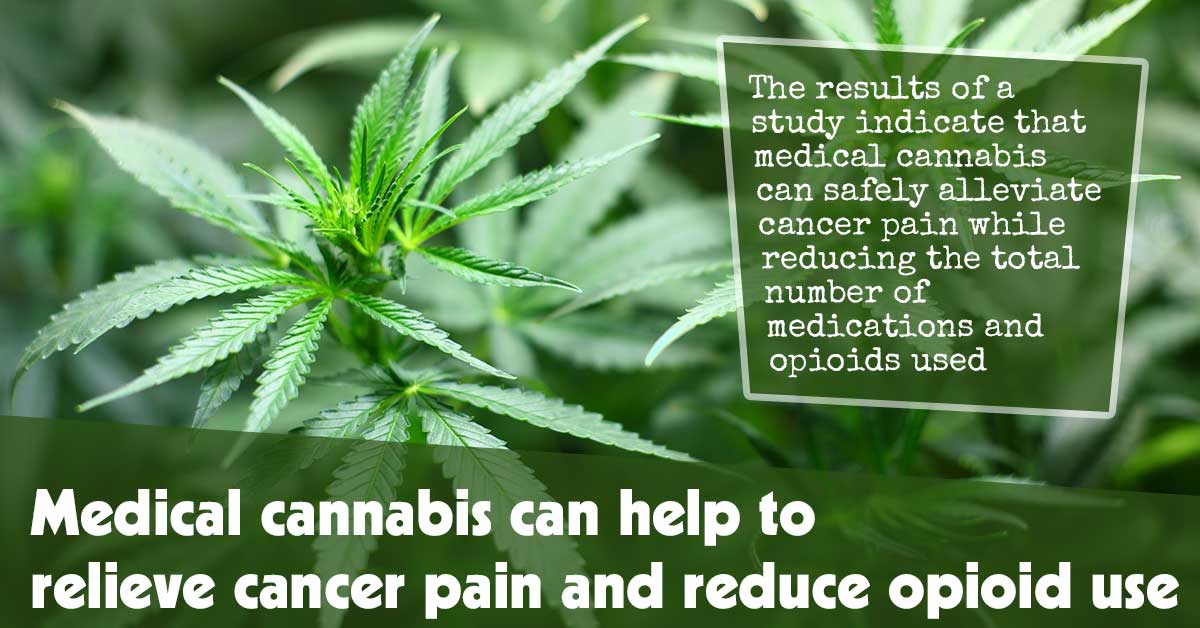The results of a study indicate that medical cannabis can safely alleviate cancer pain while reducing the total number of medications and opioids used.1✅ JOURNAL REFERENCE DOI: 10.1136/spcare-2022-004003
Products with equivalent amounts of the active ingredients CBD and THC, instead of the dominance of either one of them, appear to be especially effective, the data suggest.
The researchers conclude that medical cannabis is a safe treatment solution when conventional medications aren’t able to alleviate cancer pain.
Over half of anticancer treatment patients and 2 thirds of those with terminal or advanced disease suffer from pain.
Powerful opioids together with other medications, which include anticonvulsant and anti-inflammatory meds, are typically prescribed for relief of pain.
But 1 in 3 individuals will still suffer from pain, in addition to the side effects of opioids such as respiratory depression, constipation, sleepiness, and nausea.
The researchers therefore wished to determine whether medical cannabis could effectively and safely alleviate cancer pain while reducing the number of opioids and medications used.
The treatment responses of 358 individuals with cancer were examined whose information was submitted to a multicenter registry over 3.5 years.
The average age of the individuals was 57; nearly half were male; and the 3 types of cancer most commonly diagnosed were bowel, breast, and genitourinary. Pain was the most commonly reported symptom that led to a medical cannabis prescription.
THC:CBD-balanced, CBD-dominant, and THC-dominant products were authorized in 38%, 16.5%, and 24.5% of individuals. Consuming the product orally was the most commonly recommended option.
The total number of medications used, symptoms, pain intensity, and daily consumption of morphine were monitored every 3 months for a year.
The intensity of pain was rated on a sliding scale from no pain at 0 to the most severe pain at 10, and pain relief from no relief at 0% to complete pain relief at 100%, with 2 summary overall pain severity measures and pain interference over the previous 24 hours.
Medical cannabis appeared to be well tolerated and safe, with just 15 moderate to severe reported side effects in 11 individuals, 13 of which were considered to be minor. The 2 most commonly reported side effects were sleepiness in 3 individuals and fatigue in 2 individuals.
Two severe side effects, a cardiovascular event, and pneumonia, were considered unlikely to have been associated with medical cannabis. Only 5 individuals ceased using medical cannabis due to side effects.
The especially good safety profile of medical cannabis observed can be partly due to the careful supervision by healthcare experts who directed, authorized, and monitored treatment in this study.
Statistically significant reductions were seen at 3, 6, and 9 months for overall pain severity, average and worst pain intensity, and daily life pain interference.
THC:CBD-balanced products were overall linked to improved pain relief compared to either CBD-dominant or THC-dominant products.
There was also a consistent reduction in the total number of medications used at all the subsequent 3-monthly check-ups, with a reduction in opioid use over the 1st 3 check-ups.
This is an observational study, and therefore can’t establish cause. Also, a significant number of individuals were lost over the 12-month follow-up while data on the usage of other prescribed medications were limited to discontinuation or addition.
Nonetheless, the data indicate a role for medical cannabis as a safe and complementary treatment solution in individuals with cancer unable to achieve adequate pain relief with conventional analgesics, which include opioids.



